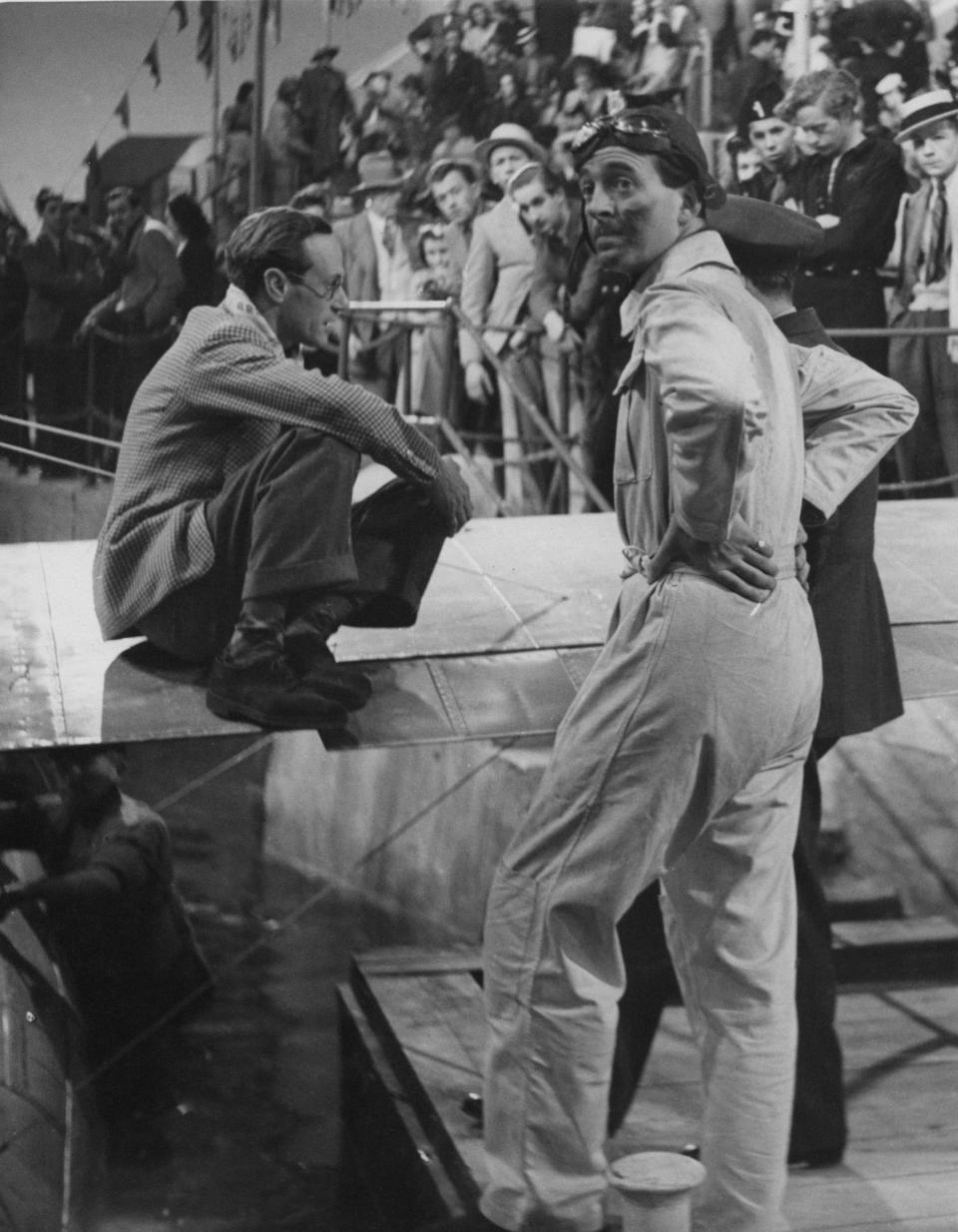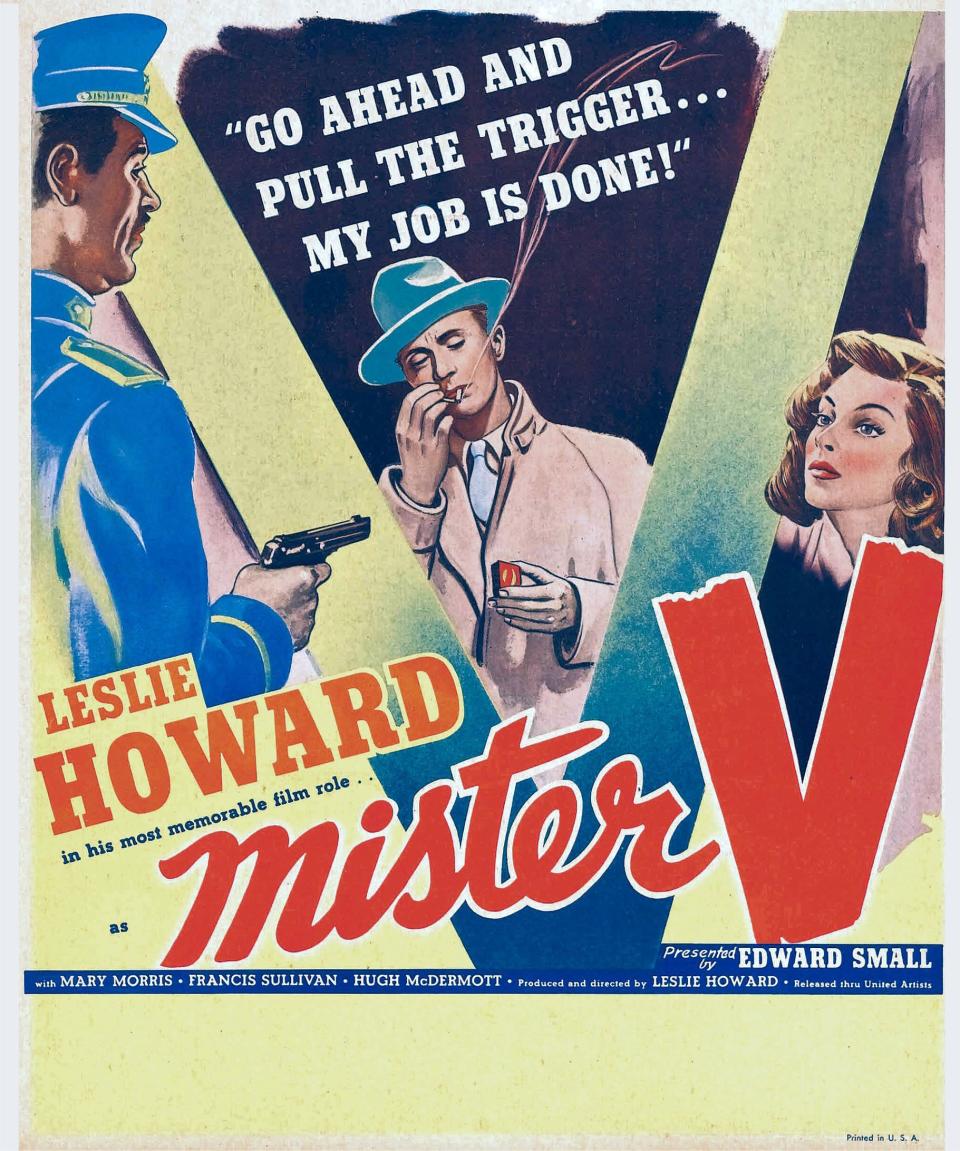'Gone With the Wind' star Leslie Howard: His glorious life and mysterious unsolved death

He starred in one of the most successful movies of all-time and was a world-famous actor.
But Leslie Howard’s glittering career and complex personal life was cut tragically short when he was lost in a mysterious plane crash aged 50, the victim of a suspected Nazi anti-spy attack during WWII. The story only gets more shadowy from there…
Two short messages came from Flight 777 around lunchtime on 1 June, 1943.
“Unidentified aircraft follows me…” Then, “Being attacked by enemy aircraft.”

Not long afterwards, the plane, otherwise known as the Ibis, disappeared from radar and crashed into the sea en route to London from Lisbon.
Read more: The tragic life of Dad’s Army’s John Le Mesurier
Seventeen people were on the aircraft, but the most famous was a 50-year-old megastar who had stood up to Clark Gable as Ashley Wilkes in Gone with the Wind, played Henry Higgins in a 1938 adaptation of Pygmalion and was renowned as The Scarlet Pimpernel in the eponymous 1934 movie.
Star of stage and screen

Slim, blonde and handsome, Leslie Howard’s real surname was Steiner (Howard was his middle name), who’d grown up in London destined to work as a bank clerk. But his looks and charm drew him to the stage towards the end of the First World War (he’d enlisted and subsequently received a medical discharge).
He was actually not all that interested in being an actor, particularly the celebrity part. Rather, he wanted to write and direct. But stage tours with Tallulah Bankhead and an increasingly impressive theatrical CV led to the inevitable call of Broadway and Hollywood. Howard in fact often despaired of movie acting in America, describing the all-powerful studios as sweat shops killing the best in actors and his own films as drivel.

But although he turned down the role of Greta Garbo’s lover in Queen Christina, he couldn’t resist the lure of movies like Of Human Bondage (co-starring Bette Davis), Romeo and Juliet and The Petrified Forest (for which he insisted on hiring then-screen newbie Humphrey Bogart, resulting in a close, lifelong friendship).
Gone With the Wind

Towards the end of the Thirties, Hollywood became all-consumed with the hunt for a perfect cast for Margaret Mitchell's Civil War bestseller, Gone with the Wind.
Although many other actors screen-tested, Howard was always first choice for gentlemanly Southerner Ashley Wilkes, original and only love of the fiery Scarlett O'Hara who found her passion to be unrequited. Howard, however, hated the character of Ashley and thought he was too old for the part (he was 20 years older than Vivien Leigh and 23 older than his screen wife, Olivia de Havilland).

He was offered a wig and youthful make-up and endured the interminable filming of the Oscar-winning epic with its changes of directors and constant producer interference. But he never much changed his mind about Ashley.
Reluctant celebrity

To the outside world, his was a perfect life. A palatial home in Surrey with a stable of sixteen horses, another house in Beverly Hills, a devoted wife that he’d married in 1916 and two kids.
But while he outwardly conveyed marital normality, he was also a notorious ladies’ man. He had affairs with several of the biggest female stars of the time, including Bankhead, Myrna Loy and Merle Oberon. Then in 1938, while shooting Pygmalion, he met and fell in love with a French secretary called Violette Cunnington.
Read more: The sad demise of British actor Terry-Thomas
They would carry on an illicit affair for more than three years until she died in 1942 from pneumonia while still in her early thirties. Her death came just six months before her lover’s.
Propagandist or spy?

Howard’s chance to switch tacks came thanks to the outbreak of the Second World War. Now well into his forties, he returned to the UK, working with the Ministry of Information and generally helping as much as he could. He was friendly with foreign secretary Anthony Eden as well as Winston Churchill himself – he’d sought the latter’s help when it looked like Howard might play Lawrence of Arabia.
But while he was more than happy to star as the creator of the Spitfire in The First of the Few (US title Spitfire) and rousing Nazi-bashing caper Pimpernel Smith, it’s thought his involvement went deeper. His son Ronald, investigating later, said that a year into the war, Howard was on the books of the Germans as a V-Personen, aka someone unofficially attached to an intelligence agency.
The mysterious countess
That appears to be what the Nazis thought just before Howard’s fateful flight, when the star had been sent on an official tour to Spain and Portugal.
Having given a lecture at the Ritz in Madrid, Howard was beguiled by an Argentinian beauty known as Countess Lila Miranda. Smitten by her, he wined and dined her around the Spanish capital. There was one problem – she worked for the Germans. Journalist Maurice Long wrote in 1957 that it was this encounter which set off the chain of events leading to his death.

If indeed Howard was a spy and he was cavorting with a Nazi shill, then it was problematic. And seemingly the Germans didn’t put much faith in the countess either.
For the record, author Estel Eforgan questions the account of the countess, suggesting that perhaps it was the head of the Ritz’s beauty salon, Baroness von Podewils, who was assigned to keep Howard on a short leash. Whatever the truth, Howard’s wandering eye got him into a lot of trouble.
His final journey

The civilian plane, owned by KLM, had survived two other air attacks before Leslie Howard got on board. The second had damaged a wing, but they’d got through it.
There were a couple of interesting figures who joined Howard. One was Tyrell Shervington, who ran Shell Oil and was thought to be high up in the secret service in Lisbon. The other was Howard’s manager Alfred Chenhalls. Chenhalls wasn’t a spy. But he was balding, stocky, wore a Homburg hat and smoked cigars. The fact he might be mistaken for Winston Churchill from a distance would prove important.
Flying at 10,000 feet, Flight 777, camouflaged and cagey, was always alert but didn’t anticipate particular trouble. They certainly didn’t expect six German fighter planes to surround them, peppering the Ibis with their machine guns. Four people are thought to have jumped out of the damaged plane, one wearing a parachute which quickly burned up. The aircraft itself plummeted towards the sea. When the commander of the German went to check on its fate, all he saw was smoke coming from the water.
The theories

So why did Leslie Howard die that day, along with his fellow passengers?
Winston Churchill blamed himself. In his memoirs, he wrote how the Nazis had mistaken Chenhalls for the Prime Minister and tried to assassinate him. “The brutality of the Germans,” Churchill said, “was only matched by the stupidity of their agents.”
Read more: Are you ready to return to cinemas in July?
Maurice Long intriguingly suggests that British intelligence might have had something to do with it – that they were worried Howard had given away official secrets to the countess.
Some think that Shervington might actually have been the target, that perhaps he was higher up in intelligence than people realised and was carrying an important package back to England.
Estel Eforgan even contends that it may have been an accident, according to certain German testimony, although that seems highly unlikely given the circumstances.

And then there’s Howard himself. One German communication wrongly labelled him as an aircraft manufacturer presumably confusing him with his character in The First of the Few. Perhaps they thought he was a good target because of that. There was also his visit to Spain, which was officially called a lecture trip, but is thought by some to have been a clandestine visit to see General Franco, facilitated by Howard’s friend and ex-lover Conchita Montenegro (his co-star in Never The Twain Shall Meet), to convince the Spanish leader to join the Allies.

Maybe the Nazis thought getting rid of a high-profile propagandist would make good copy? Goebbels personally came up with the German newspaper headline ‘Pimpernel Smith has made his last trip!’
And talking of Goebbels, writer Ian Colvin argues that he was jealous of Howard for befriending a world-famous movie star before the war that the German had his eye on.
Whatever the truth, it was a premature end to a remarkable life. The Allies changed the way they operated civilian planes from Lisbon, questions were asked in Parliament about the incident and Hollywood mourned.

His legacy, however, lives on in a canon of interesting work, not least Gone With the Wind, still the biggest box office hit of all-time when adjusted for inflation.
As for his tragic hero’s death, well, it’s almost cinematic.

 Yahoo Movies
Yahoo Movies 
